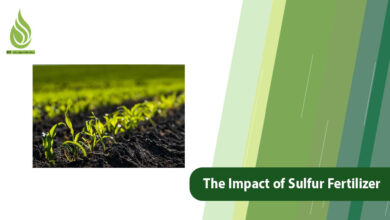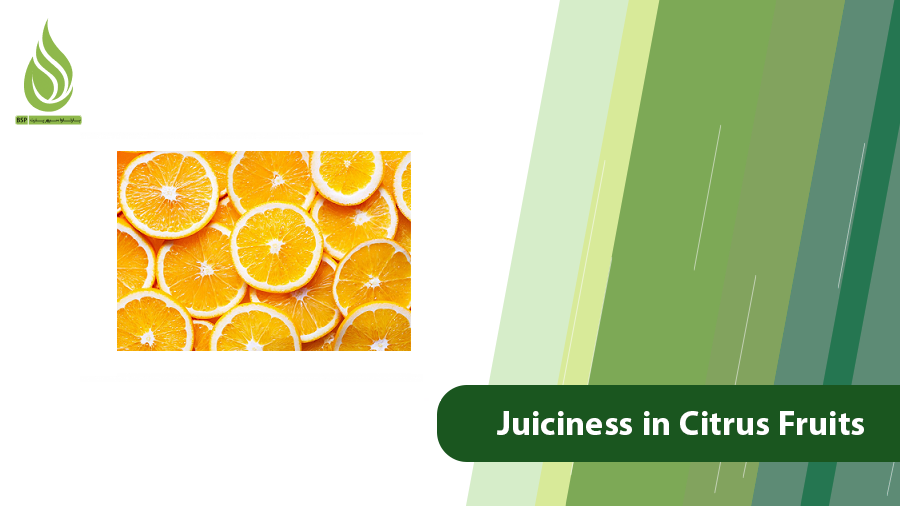
The Secret of Juiciness in Oranges, Lemons & Other Citrus
Juiciness in citrus fruits is a game-changer for market appeal and consumer satisfaction. Not only do juicy fruits taste better, but they also pack more nutritional punch, making them a staple in diets worldwide. In this guide, we’ll uncover the secrets to achieving ultra-juicy oranges, bitter oranges (also known as Seville oranges), lemons, and tangerines (mandarins). Drawing from global agricultural practices, we’ll explore strategies. Whether you’re a backyard grower or a commercial farmer, these tips can transform your harvest.
Why Juiciness Matters in Oranges and Other Citrus Fruits
Oranges and tangerines are among the most beloved fruits, hitting markets in abundance during fall and winter. Their delicious flavor and health benefits drive high global consumption. Citrus fruits are loaded with vitamin C and antioxidants, making them a go-to for boosting immunity and warding off viral illnesses. They’re versatile too, used in juices, jams, dried snacks, and more. Citrus production includes oranges (about 55% of output), mandarins (25%), lemons/limes (13%), and grapefruits (7%), according to FAO. In the Middle East, countries like Egypt and Turkey lead in exports, with Egyptian citrus prized for its flavorful, juicy profile thanks to fertile Nile Delta soils and sunny conditions.
Have you ever tried a dry, lackluster orange from your own trees? Many citrus growers face this issue, where fruits lack moisture, affecting appearance, weight, and aroma. Heavier fruits mean more juice—and more profit for farmers. Juicy citrus boasts clear, blemish-free skins, enhancing shelf appeal and market value. For growers, focusing on juiciness in citrus fruits isn’t just about quality; it’s a smart business move that boosts profitability. In arid Middle Eastern regions, innovative practices are turning challenges into opportunities for premium, juicy yields.
To achieve juicy, flavorful citrus, a holistic approach is key: selecting the right varieties, managing your orchard, optimizing nutrition, and ensuring proper watering. Let’s break down these factors.
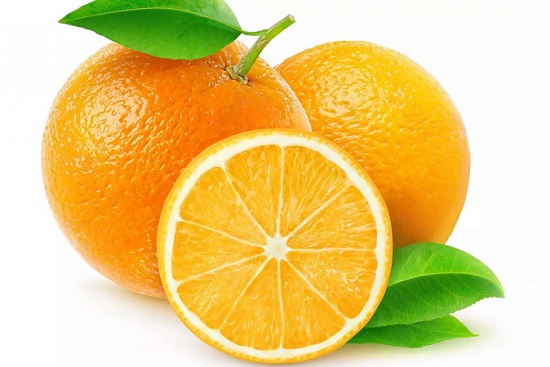
Key Factors Influencing Juiciness in Citrus Fruits
Juiciness isn’t accidental; it’s the result of careful management. From genetics to environmental tweaks, here’s what drives juicy citrus fruits.
Selecting the Right Varieties
Variety choice sets the foundation for juicy fruits. Different citrus cultivars vary widely in natural juiciness, so pick ones adapted to your local climate for optimal results. If you’re starting a new orchard or replacing old trees, opt for genetically juicy strains that thrive in your area. For instance, in the Mediterranean and Middle East, varieties like Valencia oranges or easy-peel mandarins are favored for their high juice content.
In Saudi Arabia and Oman, collaborative programs in 2025 are advancing micropropagation techniques for citrus varieties, focusing on those that yield juicier fruits under arid conditions.
A pro tip: Choose cold-resistant hybrids if your region experiences mild winters, as they maintain juiciness without stress-induced dryness.
Climate and Geographic Conditions
Weather and location play starring roles in citrus juiciness. Warm, humid areas create ideal conditions for plump, moisture-rich fruits. Low-humidity environments, common in parts of the Middle East, can lead to reduced juice and smaller sizes. Citrus craves sunlight, lots of it, for vibrant, juicy development. These trees are sensitive to cold; extreme frosts can damage them, leading to less juicy harvests the following season.
Tropical and subtropical zones are prime for citrus, where minimal cold exposure results in sweeter, juicier fruits. In the Middle East, regions like Turkey’s Mediterranean coast benefit from ample sun, though 2025 forecasts predict a 36% drop in production due to hot weather during blooming. In Saudi Arabia, innovative farming turns arid land into citrus havens using mulching to retain soil moisture. Globally, heat units (a measure of accumulated warmth) influence yield and quality.
Matching varieties to your climate is step one. For Middle Eastern growers, planting in southern slopes or behind windbreaks shields trees from cold winds, preserving juice potential.
The Role of Fertilization and Nutrition in Boosting Juiciness
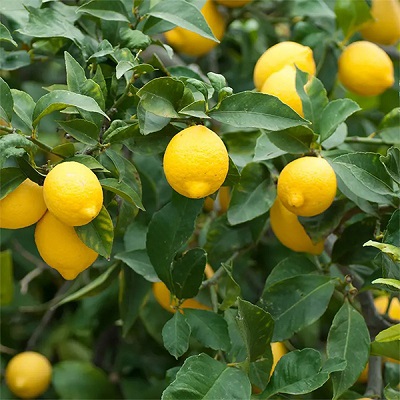
Proper feeding is non-negotiable for healthy, juicy citrus. Trees have specific nutrient needs that directly impact fruit moisture and flavor.
- Nitrogen-Rich Fertilizers: Nitrogen fuels leaf growth and chlorophyll production. Lush, healthy foliage amps up photosynthesis, leading to juicier fruits. Balance is crucial; too much can cause excessive vegetative growth at the expense of fruit quality. In Florida citrus guidelines, nitrogen tops the list for yield impact. Ammonium sulfate stands out here as a quick-acting source, providing rapid greening and growth while acidifying soils for better nutrient uptake.
- Potassium: This is the MVP for juiciness. It regulates cell osmotic pressure, enhancing water absorption into fruits. Deficiency leads to tough, dry pulp. Research confirms potassium’s outsized influence on citrus characteristics.
- Calcium and Magnesium: These strengthen fruit tissues, locking in moisture and preventing skin cracking. They’re vital for long-lasting juiciness.
- Micronutrients like Zinc and Boron: Essential for flowering and fruit set. Shortages cause young fruit drop and lower quality in survivors.
Fertilizing isn’t a one-and-done; timing and amounts matter. Soil tests guide customized plans. For alkaline soils prevalent in the Middle East, ammonium sulfate fertilizer shines; it lowers pH, unlocking nutrients for better absorption and ultimately juicier yields. This fertilizer’s high nitrogen and sulfur content supports robust growth, increasing fruit size and moisture. In horticultural crops like citrus, it boosts vegetative development and overall yields during the growing season. Growers report new growth surges after application, leading to heavier, juicier fruits. We suggest you take a look at our guide to citrus tree fertilization.
Repeated small doses synchronize with the tree’s needs, enhancing the canopy, roots, and fruit. For Middle Eastern farmers, where soil pH often skews high, ammonium sulfate is a cost-effective way to optimize conditions for premium citrus.
Soil Type and Its Impact
Soil is the bedrock of juicy citrus. Ideal mixes are semi-light, blending sand, clay, and organic matter for good drainage. Poor drainage leads to root rot, starving the fruits of water. Citrus prefers a pH around seven. Alkaline soils hinder nutrient uptake, resulting in dry fruits.
Sandy soils in Saudi Arabia benefit from organic amendments to hold moisture. Fertile soils like Egypt’s Nile Delta produce exceptionally juicy citrus. Test your soil annually to maintain balance.
Irrigation Management for Peak Moisture
Watering right is crucial for juicy fruits. Consistent, timely irrigation ensures steady growth. Increase frequency in hot seasons to keep roots hydrated. Avoid overwatering to prevent root damage. Drip irrigation is the gold standard, delivering water efficiently while minimizing waste, perfect for water-scarce regions. Mulching around trees retains soil moisture, reducing evaporation.
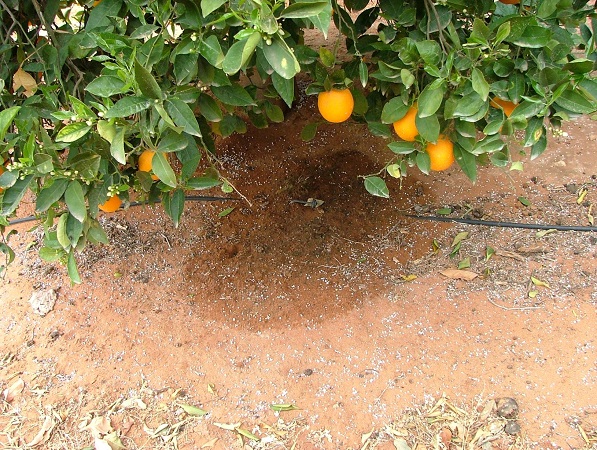
Factors like tree age, season, and soil type dictate schedules. Clay soils hold water longer, allowing wider intervals. In Turkey, where heat waves challenge growers, precise irrigation maintains juiciness despite production dips.
Pruning for Better Light and Airflow
Pruning excess branches lets sunlight reach fruiting ones, boosting quality. The best time is post-harvest for minimal stress. In Mediterranean practices, pruning trees every three years keeps trees vigorous and fruits juicy. This enhances airflow, reducing disease risk.
Combating Pests and Diseases
Fungal issues and insects sap moisture from fruits. Early detection and treatment preserve juiciness. Remove damaged parts, use approved pesticides, and maintain orchard hygiene.
Harvesting and Post-Harvest Handling
Pick at peak ripeness to lock in juice. Fruits harvested too early or too late lose moisture. Store in cool, humid conditions post-harvest. During ripening, acids drop while sugars rise; high sugar means top quality.
Winter Care: The Hidden Key to Next Season’s Juicy Harvests
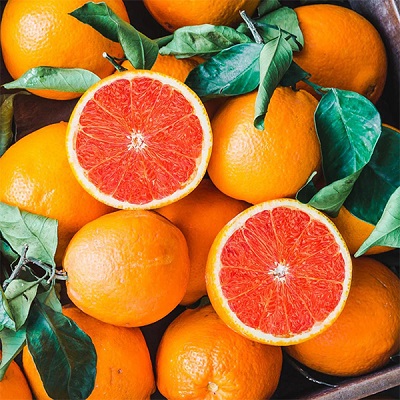
Citrus trees, especially oranges, are vulnerable in winter. Poor care leads to frost damage, affecting future juiciness through impaired water transport. Select cold-hardy varieties to minimize shocks. Plant in protected spots to avoid cold winds.
Fall nutrition builds resilience; potassium regulates cell water, while amino acids prevent freezing. In the Middle East, where winters vary, these steps ensure spring vigor and juicy fruits.
In conclusion, juicier oranges, bitter oranges, lemons, and tangerines stem from balanced climate adaptation, nutrition (ammonium sulfate for optimal pH and growth), irrigation, and care. By applying these globally proven, Middle East-focused strategies, you’ll harvest bigger, better fruits. For ammonium sulfate to supercharge your citrus, check our high-quality options; your trees will thank you with every juicy bite.

